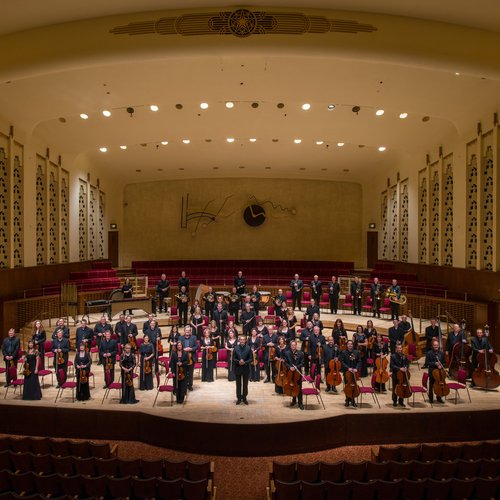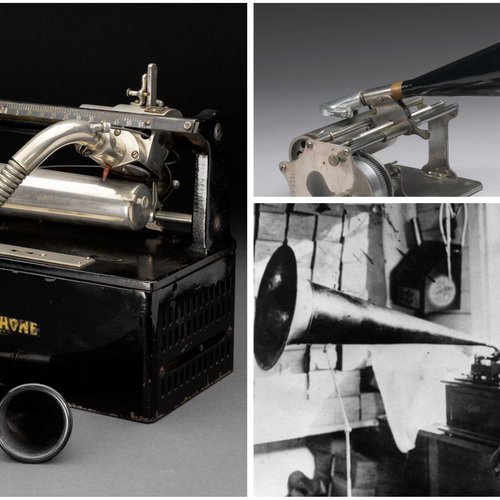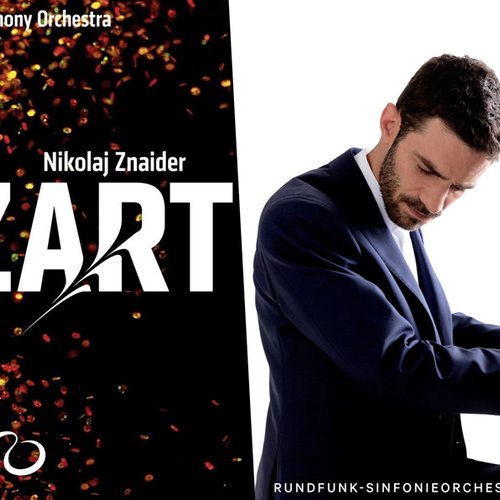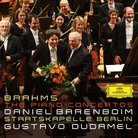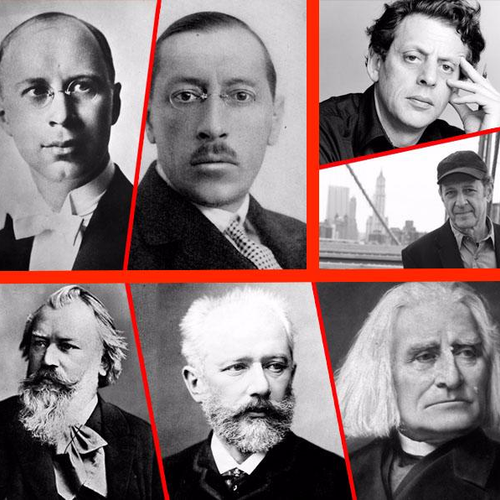Best Brahms works: top 10 pieces by the Romantic composer
2 February 2022, 18:20 | Updated: 21 November 2023, 10:58
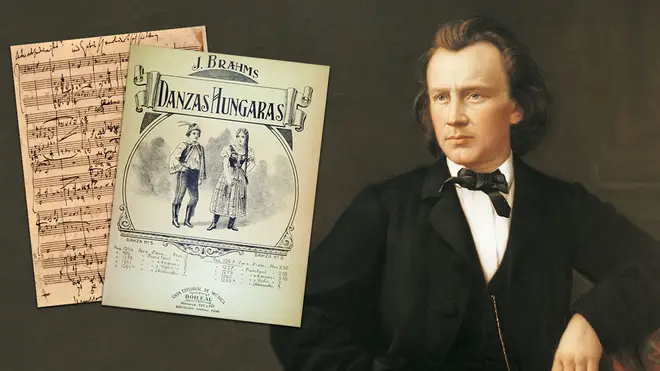
From the Cradle Song to his third symphony, you’ve probably heard more Brahms in day-to-day life than you’ve realised.
One of the ‘Three Bs’ alongside Bach and Beethoven, Johannes Brahms was a German composer in the Romantic period of classical music.
Spending most of his time in Vienna, he moved among some of the musical elite of the mid-Romantic era, becoming close friends with both Robert and Clara Schumann, as well as the violinist Joseph Joachim and the conductor Hans von Bülow.
While many of his contemporaries were experimenting with programmatic, or descriptive music, Brahms earned himself the reputation of being more conservative, preferring to stick to “absolute music”. His harmonies and orchestration however are deeply rooted in the Romantic tradition, and make for some truly sublime listening. Here are ten of his finest moments that are definitely worth a listen.
Read more: 15 facts about composer Johannes Brahms
-
Hungarian Dances (1869–1880)
Brahms was introduced to “gypsy-style” music by the Hungarian violinist Ede Reményi, who he met in 1850. His 21 Hungarian Dances were originally written for piano four hands, where two pianists play from the same keyboard, but are best known now in their orchestral arrangements.
They were immensely popular throughout Brahms’s lifetime and were likely his most profitable works. Today, Nos 1 and 5 remain popular, with the latter based on the Hungarian dance style of the czardas with its lively character, oom-pah bassline, and sweeping string melodies.

Lang Lang and Gina Alice play a breathless Brahms duet!
-
Academic Festival Overture (1880)
The Academic Festival Overture was composed in the summer of 1880 in tribute to the University of Breslau, after Brahms discovered he was to be awarded with an honorary doctorate.
Although fairly uninspiring at first glance, the title of the piece is really an example of the composer’s wry sense of humour and love for a good practical joke. Throughout its nearly ten minutes, the piece references melodies used as drinking songs by students at the time, with a masterful application of compositional techniques to satisfy the “academic” portion of his audience.
The piece is really some of Brahms’s finest orchestration work, requiring one of the largest ensembles of all his compositions. He conducted the premiere himself at the degree ceremony, where his humorous references did not go unnoticed!
-
German Requiem (1865–1868)
Brahms’s German Requiem (or, to give it its full title, A German Requiem, to Words of the Holy Scriptures) is a large-scale work for chorus, orchestra, and solo soprano and baritone. It opens with a sublimely spine-chilling choral motif, setting the scene beautifully for the ensuing 70 minutes.
Brahms suffered the loss of his mother in 1865, and his friend and mentor Robert Schumann nine years prior, both of which it has been speculated could have inspired this piece. He assembled the text himself, drawing from the German Luther Bible, and conspired with Clara Schumann, of whom he was very fond, over the title.
Where the traditional Requiem Mass in Roman Catholicism begins with a prayer for the dead, A German Requiem is a mass for the living.

Brahms: German Requiem // Valery Gergiev & London Symphony Orchestra
-
Violin Concerto (1878)
Brahms wrote only one concerto for violin, dedicating it to his close friend and almost lifelong collaborator, Joseph Joachim. The composer leaned heavily on the 19th-century violin virtuoso for support and advice during its composition, noting that he had no patience for slurs that indicated bowing rather than phrasing.
Despite Joachim’s willingness to assist, not all of his recommendations were taken onboard. The concerto is technically difficult and musically brilliant, and although the public embraced the piece with rapturous applause, many top violinists and critics at the time had less flattering things to say. Both Hans von Bülow and Joseph Hellmesberger are credited with the idea that the concerto was as much “against the violin” as it was for it, Henryk Wieniawski called it “unplayable”, and Pablo de Sarasate complained that the oboe had the only melody in the second movement and refused to play it.
Joachim performed the premiere in Leipzig in 1879 and Brahms, who had something of a reputation for being difficult, complained of the performer’s decision to precede his new piece with Beethoven’s Violin Concerto: “it was a lot of D major – and not much else on the program”.
Read more: 10 of the best Romantic composers in classical music history

Brahms: Violinkonzert ∙ hr-Sinfonieorchester ∙ Hilary Hahn ∙ Paavo Järvi
-
Wiegenlied (1869)
Wiegenlied, better known today as Lullaby or Cradle Song, is without a doubt the best-known piece ever written by Brahms, having wound its way into popular culture everywhere.
A lied (German song) for voice and piano, Brahms dedicated his composition to his friend Bertha Faber to congratulate her on the birth of her second son. The unlucky-in-love composer had had a soft spot for Faber in their youth, and he disguised a song that she used to sing to him as a counter-melody woven into the lines of the piece.
Read more: What are the lyrics to Brahms’ famous ‘Lullaby’, and what’s the story behind it?

Brahms's Lullaby – Benjamin Appl and James Baillieu
-
Symphony No. 4 (1884)
In the early 1880s, Brahms was invited by the conductor Hans von Bülow to collaborate with the Meiningen Court Orchestra. This was the beginning of a fruitful relationship, which saw the premieres of Brahms’s final two symphonies, Nos 3 and 4.
Von Bülow was such a fan of Brahms’s that he ranked him as one of the “Three Bs” alongside Bach and Beethoven in a letter to his wife – an accolade that very much remains tied to the composer’s legacy today.
Brahms is known for being a more conservative composer than many of his Romantic contemporaries, and this symphony has been compared by many to the great work of Beethoven himself.

Symphony No. 4 / Johannes Brahms / Klaus Mäkelä / Oslo Philharmonic
-
Variations on a Theme by Haydn (1873)
Also known as the Saint Anthony Variations, Brahms’s Variations on a Theme by Joseph Haydn is a theme with eight variations and a finale, originally written for two pianos but much better known in its orchestral version.
The piece is derived around a theme titled ‘Chorale St Antoni’, which Brahms discovered in a work for wind ensemble attributed to Haydn. More recently, scholars and academics have disputed that it was written by Haydn at all, suggesting that 19th-century publishers may have sold it under his name to make it more profitable.
The theme begins with a series of unusual five-bar phrases, which are sure to have caught Brahms’s attention since he structured each variation around this. Each of the eight variations has its own distinctive character, and the piece culminates in a magnificent finale which consists of a theme and variations in itself. The compositional complexity demonstrated by Brahms here is second-to-none in the Romantic era, and results in around 20 minutes of absolute musical glory for the listener.
Read more: Brahms: 15 facts about the great composer

Johannes Brahms - Variationen B-Dur über ein Thema von Joseph Haydn op. 56a | WDR Sinfonieorchester
-
Piano Concerto No. 1 (1858)
Brahms’s first piano concerto is the work that truly cemented his name in the compositional hall of fame, both in his time and in the history books. Premiered by the composer himself in Hanover in 1859, it was the first of his orchestral works to receive great audience approval – and who can blame them?
From its very beginning, the full force of the mid-19th century orchestra performs a sonic slap of an introduction, complete with timpani rolls, string tremolos, wind trills and the sound of orchestra sections battling for supremacy.
With the middle movement described as “exquisite” and “beautiful” by Clara Schumann, Brahms’s Piano Concerto No. 1 justifiably deserves its place in the top ten.
-
Piano Quintet (1865)
Brahms’s Piano Quintet is truly the crème de la crème when it comes to his chamber works. Dedicated to Princess Anna of Hesse, it is written for the typical piano quintet lineup: piano, two violins, viola and cello.
Known for his more Classical era leanings, the quintet is one of Brahms’s more Romantic ventures, with more interesting harmonic experimentations particularly in the first and fourth movements.
The quintet has a predominantly dark mood throughout, lightened somewhat by the calm second movement but driven in its finale to an outburst of stormy intensity.

BRAHMS Quintet in F minor, Op. 34
-
Symphony No. 3 (1883)
Brahms’s third symphony was written almost six years after its predecessor, the Symphony No. 2. At around 40 minutes in length, it is the shortest of Brahms’s symphonic output but by no means the poorest.
The young Richard Strauss, who at the time was working as an assistant to Hans von Bülow, had been undecided about Brahms and his music up to that point, but was convinced of his genius by the third symphony and was unabashedly complimentary of the fourth.
The third movement of Symphony No. 3 is the most famous, having been widely adapted in music, film and TV from the 1940s to present day, appearing in a Frank Sinatra song, Fawlty Towers, a video game and as part of a gymnastics routine at the London 2012 Olympic Games.

Concertgebouworkest - Symphony No. 3 - Brahms



